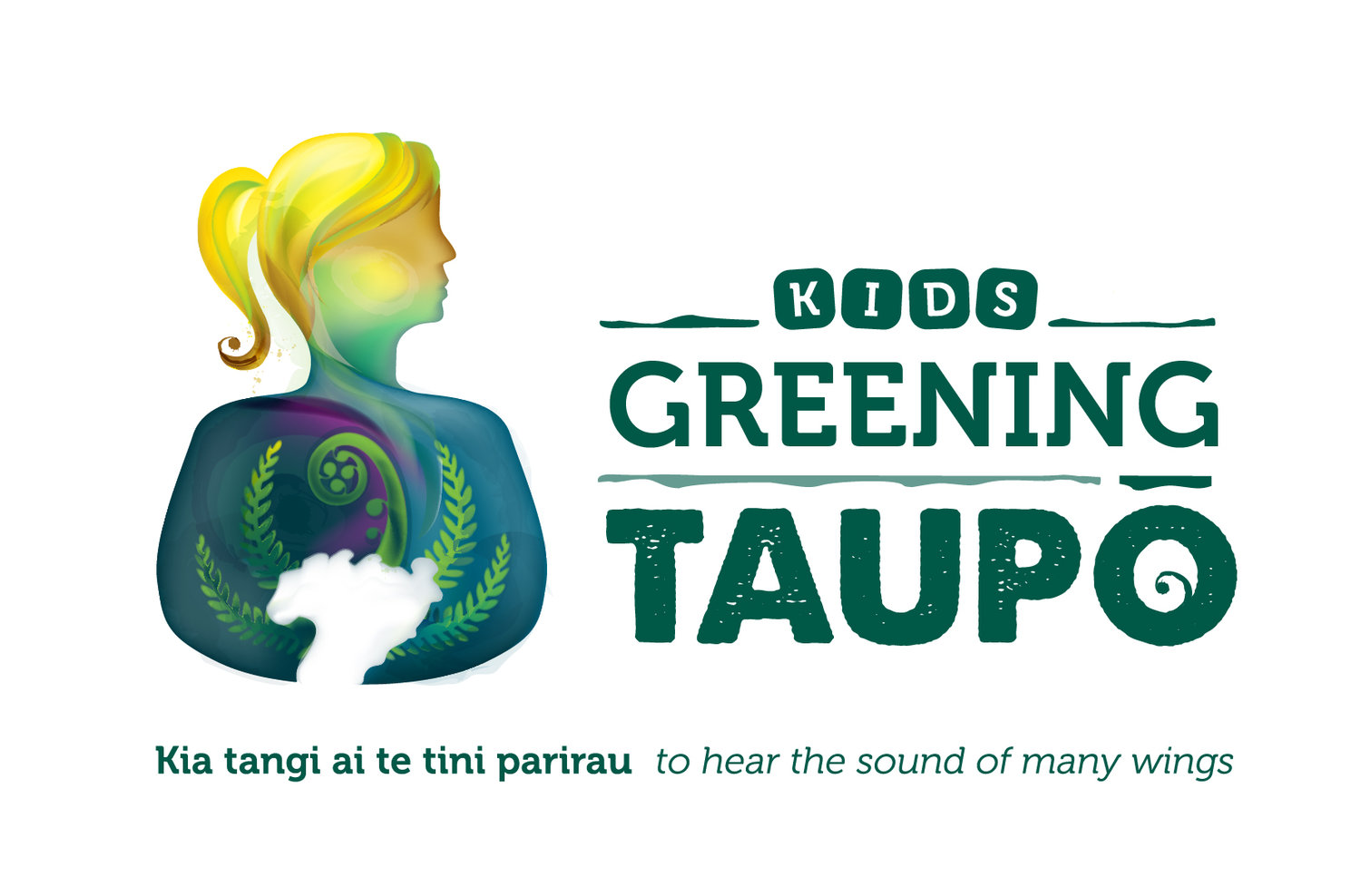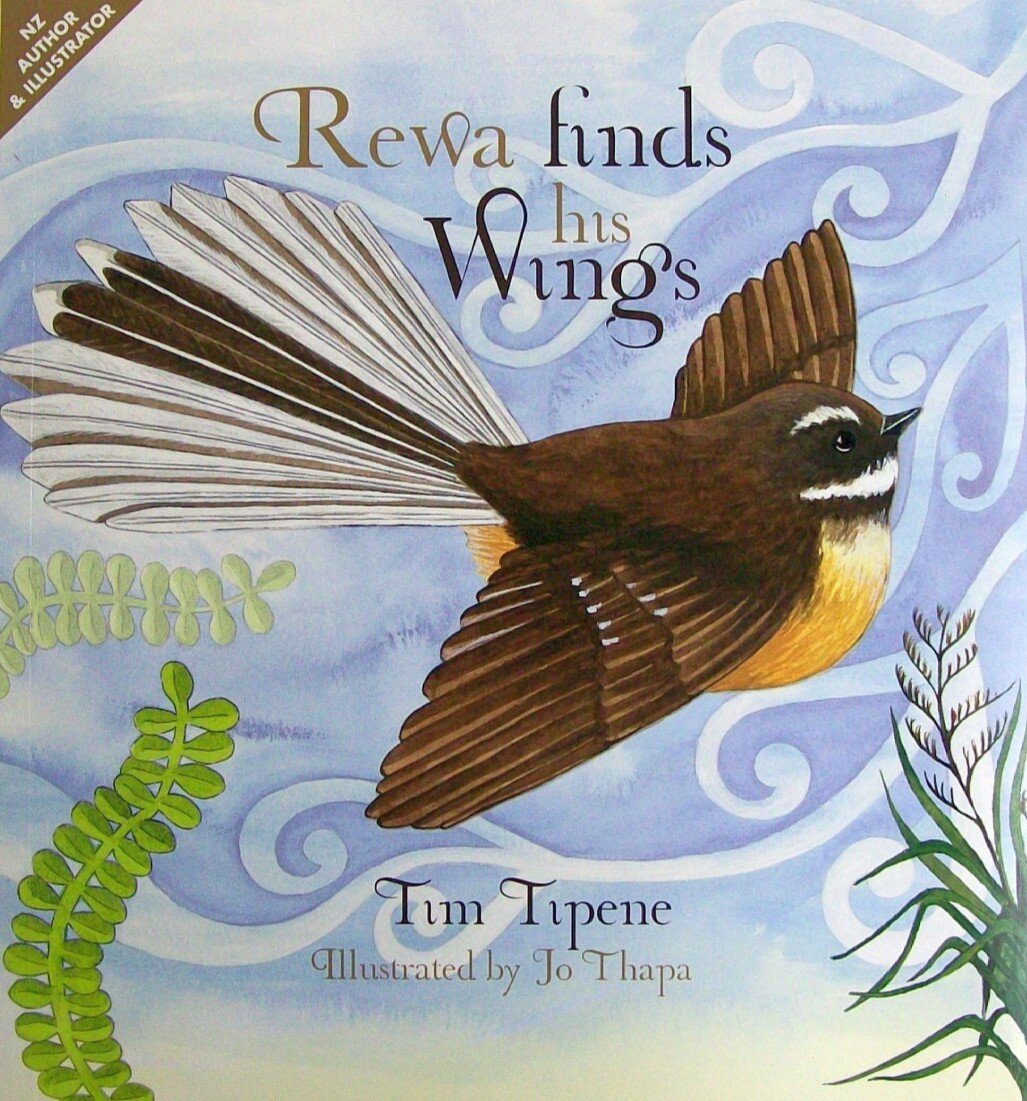Manu/Birds of Aotearoa
Nau Mai! Welcome to the Kids Greening Taupo Online Nature Classroom!
This Online Nature Classroom is all about manu/birds of aotearoa
AN INTRODUCTION TO AOTEAROA’S UNIQUE AND CHARISMATIC NATIVE BIRDS
Some of our birds are gigantic and flightless, others are as small as golf balls and perch in the trees of our gardens, flying amongst the flowers. Some have feet like the dinosaurs, others have tiny feet to hold onto branches. Some (although flightless) even have tiny naked wings hidden underneath their feathers (vestigial wings). Some have vibrant colours, others are dull greens and browns so that they can camouflage themselves in the forest. Some have short beaks to peck at seeds, others have really long beaks to dig down into the soil to get big juicy worms. Some birds sing beautiful melodies, others make booming sounds when they are threatened. Some are cheeky and like to pull your car apart, others don’t like to come very close to humans. Some live in the forests, others might live by the ocean, in wetlands or high up on the very tops of mountains. Aotearoa’s native/endemic birds are very special.
Every species in an ecosystem has an important role to play
Without birds, many of Aotearoa’s native trees, plants and flowers (flora) would no longer exist. Birds help to spread to seeds from trees and transfer pollen (just like the bees, moths and flies) between flowers. Birds even have a part to play in bug/invertebrate population control as bugs make up a big part of their diet (I wonder what would happen without them).
Meet the locals: video introduction
Our ‘Fill your Kete’ section will provide you with some fun nature activities based around our topic. As this topic is Manu/Birds of Aotearoa, our activities are based around identification through sight and sound, along with bird feeding habits and creation stories.
Identification through sight
Sit quietly in your garden or local greenspace (or watch through a window).
What birds do you notice?
Do you know the names of all the birds that you can see?
If you’re not sure of one of them, look carefully and notice the colour of the eyes, beak and feathers.
What size is it?
What shape is its head, beak, body?
How long is its tail?
Does it have any unusual markings?
Go to BIRDS ONLINE and click on the ‘Identify that bird tab’. Follow the instructions and see if you can find a photo that matches your bird. Good luck!
How many different birds can you spot?
Were there any birds that you have not noticed before? Let us know what species you discovered. Even better share a photo with us!
Extra Activity:
Make a bird feeder to welcome more birds to your garden.
Try our Scavenger Hunts below:
Identification through sound
Sit in your garden and listen carefully. What birds can you hear? Are there any bird sounds that you are unsure of? Use BIRDS ONLINE to identify bird calls and learn more about them.
You can sit quietly in a green space and play the birds' calls on a phone to get them to come and visit you! Play the male grey warbler call and see if the tiny grey warblers fly down to see you. They are one of New Zealand's smallest birds and are often difficult to spot. It works well if you sit near a bush or small tree, as the birds will come closer. If you are under big trees it can still be difficult to spot them.
Try playing other birds' calls and see what other birds you can get to come and see you. We've had lots of fun with this activity and have had luck with pīwakawaka calls, yellow hammer calls and silver eye calls. We'd love to know what birds you got to come to you!
If you would like to explore Bird Identification further, the Department of Conservation has a wonderful online course on 10 Common NZ Forest Birds here.
Do a 5 MINUTE BIRD COUNT
Let’s head to our garden or local greenspace and do a bird count! You can download the sheets and lots of other resources for this from Manaaki Whenua.
You can download and print a garden bird guide here.
Note that you only cross the box for the biggest number of that type of bird seen at ONE TIME. The official bird count is in a set week in June and takes an hour. However, you can use these sheets to do your own bird count whenever it suits you and do them for a much shorter time. We suggest doing several bird counts in different spots, each one for 5 minutes. It will be interesting to see what birds you spot and which birds are the most common.
If you want to do this for a maths exercise, you could predict how many of each bird you will see, and then compare your predictions with the results. Instead of using the printable bird count sheets, learn about tally charts and do a tally chart of the birds that you see over a set period of time. You could then graph these results. Deciding which type of graph is the most appropriate to display the data with is a lesson in itself!
CURIOSITY QUESTIONS
Now that you have spent time in your backyard and local green space watching and listening to the birds, what are you wondering? Was there a bird that caught your interest? What bird would you like to find out more about?
Choose one bird that interests you the most and do some research. What makes this bird so special?
We would love to see your project. Maybe you could make a video about your bird to share with us!
Or, use your imagination…
Think about what New Zealand would be like without any birds. What would happen? What would it look like? How would things change?
After you’ve written down your ideas, watch THIS VIDEO and see what this man thinks New Zealand will be like if our birds all become extinct. Were your ideas similar?
KI TE PANUI/ TO READ
This ki te Panui section is based on Aotearoa's unique native manu/birds.
This Online Nature Classroom is a little bit different with our read aloud being a shortened version of How the Kiwi Lost its Wings, by Alwyn Owen. Watch the shadow puppet story in the section below.
If you already have this book make sure you head outside to connect to nature whilst enjoying it!
After reading/listening to the book make sure to try the follow up shadow puppet story activity.
In each Online Nature Classroom we will give book suggestions along with at least one video read aloud.
Our recommendation is How the Kiwi Lost its Wings.
Watch the read aloud below-
Follow up activities:
Shadow Puppets
You have been watching and listening to the birds in your own backyard or local green space. Now is your chance to make up your own story about some of our special birds and see if you can tell it using shadow puppets.
You could cut out cardboard shapes and attach them to skewers to make your own shadow puppets, or just use your hands!
HERE is some inspiration using cardboard cutouts.
HERE are some ideas for hand shadow puppets.
Get creative to show others how special our birds are!
Native Bird BINGO
Play Native Bird BINGO with your class! There are enough sheets for the whole class to play. The best part is that you can learn some fun facts about our native birds while you play in this cool game!
OTHER Activities and BOOK SUGGESTIONS (manu/birds):
Check out lots of other cool activities and resources about native birds here.
https://www.facebook.com/57062666983/posts/10157324062646984/
























